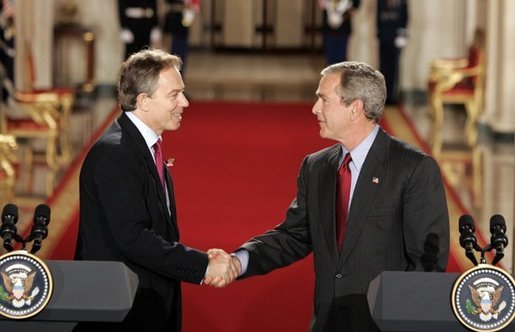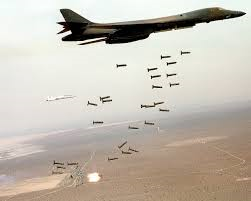In
een artikel op The Nation bericht Tim Shorrock over een
artikel in de New York Times, geschreven door David Sanger, éen
‘journalist die in het verleden vaak als bron fungeerde voor lekken over het
VS buitenlandbeleid t.a.v. Noord-Korea (ofwel men lekte officiële documenten naar Sanger).
Deze
Sanger bracht dat artikel in de NYT en daarin wordt gesteld dat Pyongyang zich niet aan de afspraken houdt die met Trump zijn
gemaakt en waarin voorts wordt gesteld dat Noord-Korea nog steeds raketten
ontwikkeld. Een en ander n.a.v. een door de rechtse denktank Center for Strategic and
International Studies (CSIS) opgesteld rapport
Uitvoerig
legt Shorrock uit dat het rapport van een enorm ‘fake news’ (nepnieuws) niveau is.
Zo zijn de getoonde foto’s van de sites in Noord-Korea, van 2 maanden
voor de gesprekken tussen Trump en Kim Yung-un………
Bovendien
zo stelt Shorrock, zijn er geen verdragen getekend over het
raketprogramma van Noord-Korea en zoals het in de dagelijkse praktijk
gaat: totdat er zaken zijn getekend gaat men door waar men mee bezig
was, of het nu om de strijd over het bezit van een gebied gaat, of
zoals in dit geval het werken aan middellange- en langeafstandsraketten…….
Lees
het volgende verhaal en intussen een cliché op deze plek: geeft het
ajb door, laat je niet langer besodemieteren door instituten als CSIS
of het Haagse Centrum voor Strategische Studies (HCSS) met hun
oorlogshitserij op basis van leugens en halve en verdraaide waarheden…… Instituten die fungeren als grootlobbyist van het militair-industrieel complex, de NAVO en het uiterst gewelddadige, terroristische buitenlandbeleid van de VS in het groot….. (waar de NAVO onder opperbevel staat van de VS…..)
NUCLEAR
ARMS AND PROLIFERATION
NORTH KOREA MEDIA
BIAS
How
‘The New York Times’ Deceived the Public on North Korea
Stretching
the findings of a think-tank report on Pyongyang’s missile bases is
a reminder of the paper’s role in the lead-up to the Iraq War.
By Tim
Shorrock
NOVEMBER
16, 2018

(Photo
by Haxorjoe at en.wikipedia, CC BY-SA 3.0)
The New
York Times may
still have a Judith Miller problem—only now it’s a David Sanger
problem.
Miller,
of course, is the former Times reporter who
helped build the case for the 2003 US invasion of Iraqwith
a series of reports based on highly questionable sources bent on
regime change. The newspaper eventually
admitted its
errors but didn’t specifically blame Miller, who left the paper
soon after the mea culpa and is now a commentator
on Fox News.
Now,
Sanger, who over the years has been the
recipient of dozens of leaks from US intelligence on
North Korea’s weapons program and the US attempts to stop it, has
come out with his own doozy
of a story that
raises serious questions about his style of deep-state journalism.
The
article may not involve the employment of sleazy sources with an ax
to grind, but it does stretch the findings of the Center
for Strategic and International Studies (CSIS),
a think tank that is deeply integrated with the military-industrial
complex and plays an instrumental role in US media coverage on Korea.
“Controversy
is raging,” South Korea’s
progressive Hankyoreh newspaper declared on
Wednesday about the Times report,
which it called “riddled with holes and errors.”
Sanger’s
story, which appeared on Monday underneath the ominous headline “In
North Korea, Missile Bases Suggest a Great Deception,” focused on a
new study from CSIS’s “Beyond Parallel” projectabout
the Sakkanmol Missile Operating Base, one of 13 North Korean missile
sites, out of a total of 20, that it has identified and analyzed from
overhead imagery provided by Digital
Globe,
a private satellite contractor.
None
of the 20 sites has been officially acknowledged by Pyongyang, but
the network is “long known to American intelligence agencies,”
wrote Sanger.
Sakkanmol,
according to CSIS, “is an undeclared operational missile base for
short-range ballistic missiles” a little over 50 miles (85
kilometers) north of the border and therefore “one of the closest
to the demilitarized zone (DMZ) and Seoul.” Pyongyang’s highly
publicized decommissioning last summer of the Sohae satellite launch
facility “obscures the military threat to U.S. forces and South
Korea from this and other undeclared ballistic missile bases.”
Its
authors added a huge caveat at the end: “Some of the information
used in the preparation of this study may eventually prove to be
incomplete or incorrect.”
But
the Times ignored
the warning and took the report several steps further. According to
Sanger, that analysis of the missile base shows that North Korea is
“moving ahead with its ballistic missile program” despite pledges
made by Kim Jong-Un to President Trump at their Singapore
summit on June 12 to
eliminate his nuclear and missile programs if the United States ends
its “hostile policy” and agrees to forge a new relationship with
North Korea.
The
“new commercial satellite images” of the undeclared missile
sites, Sanger concluded darkly, suggest that North Korea “has been
engaged in a great deception.”
While
North Korea has offered to dismantle a major launching site, he
asserted, it continues “to make improvements at more than a dozen
others that would bolster launches of conventional and nuclear
warheads.” That finding “contradicts Mr. Trump’s assertion that
his landmark diplomacy is leading to the elimination” of the
North’s nuclear weapons and missiles, Sanger concluded.
The
implication was that North Korea, by continuing to build missiles
after the Singapore summit, is lying to the United States and is
therefore untrustworthy as a negotiating partner—and that Trump, by
proclaiming that he has neutralized Kim’s threats, has been
deceived. The Times-CSIS
report was immediately picked up by major media outlets and repeated
almost verbatim on NBC
Nightly News and
NPR, with little additional reporting.
A
leading Democrat, Senator Edward Markey of Massachusetts, seized on
the report to argue that President Trump is “getting played” by
North Korea. “We cannot have another summit with North Korea—not
with President Trump, not with the Secretary of State—unless and
until the Kim regime takes concrete, tangible actions to halt and
roll back its nuclear weapons and ballistic missile programs,”
he said in
the statement.
But
even a cursory analysis of the imagery should have raised questions.
On Monday night, a Korean
news outlet pointed
out that all the photos analyzed in the CSIS report are dated March
29, 2018—almost two and a half months before Trump
and Kim met in Singapore on June 12.
The
dates make Sanger’s claim that North Korea is “moving ahead” on
missile production after its
pledges to Trump laughable; indeed, they make his story look like a
serious attempt to deceive the American public about the real
progress that has been made in ending the standoff.
In
fact, as discussion swirled on Twitter, it became clear that Sanger
was exaggerating the report. Arms-control experts immediately
questioned his assertions, arguing that he had ignored the fact that
North Korea and the United States have yet to sign any agreement
under which the North would give up its nuclear weapons and missiles.
And in the absence of an agreement, it’s status quo for both North
Korea and the United States.
North
Korea’s missile program “is NOT deception,” Vipin Narang, an
associate professor of political science at MIT, posted soon
after the story was published. Narang, who writes
occasionally for the Times editorial
pageon
North Korea, pointed out that Kim Jong-un has never offered to stop
producing ballistic missiles and in fact had ordered more to be
produced in January 2018.
“Unless
and until there is a deal” with Trump, he wrote, “Kim would be a
fool to eliminate and stop improving [them].… So the
characterization of ‘deception’ is highly misleading. There’s
no deal to violate.” (Like other US analysts, Narang did not
question the CSIS report itself, calling it “excellent.”)
The
CSIS report was denounced by the government of South Korean President
Moon Jae-in as “nothing new,” and Kim Eui-kyeom, its chief
spokesperson, took particular exception to the Times’
use of the term “deception.” To his credit, Sanger acknowledged
the criticism and quoted the statement in full.
“North
Korea has never promised to dismantle its missile bases, nor has it
ever joined any treaty that obligates it to dismantle them,” said
Kim. “So calling this a ‘deception’ is not appropriate. If
anything, the existence of these missile bases highlights the need
for negotiation and dialogue, including those between the North and
the United States, to eliminate the North Korean threat.”
Hankyoreh,
in its analysis, objected to
Sanger’s claim that Sakkanmol and other missile bases are “hidden.”
It reported that South Korea’s Joint Chiefs of Staff had identified
the base as the source for a short-range missile launched by North
Korea on March 10, 2016.
“South
Korean and overseas news outlets at the time dedicated significant
coverage to the launch, noting the presence of an underground Scud
missile base in the Sakkanmol area.”
Leon
Sigal, the author of a book about North Korea and a former member of
the New
York Times editorial
board, sharply disagreed with Sanger’s assertion that North Korea
is now “moving ahead with its ballistic missile program.” Writing
Tuesday in 38
North,
Sigal said the CSIS report notes that “only minor infrastructure
changes were observed” at the missile site since Kim came to power
in December 2011. That’s hardly progress.
Sigal
also noted the absence of a US–North Korea agreement inhibiting the
“deployment of missiles by Pyongyang, never mind requiring their
dismantlement. Nor has Washington yet offered the necessary
reciprocal steps that might make such a deal possible.”
In
a biting comment on his former employer, he added that “substituting
tendentious hyperbole for sound reporting may convince editors to
feature a story on page one, but it is a disservice to readers.”
Taking
note of the response from the Moon government and arms-control
experts, Christine Ahn, the founder of Women Cross DMZ and a strong
advocate for engagement with the North, called on
the newspaper to correct the story. “The @nytimes should write a
retraction,” she said. “They just made real Trump’s allegations
of #fakenews.”
On
Tuesday, as she predicted, Trump used the story to launch another
attack on the media. “The story in the New York Times concerning
North Korea developing missile bases is inaccurate,” he tweeted.
“We fully know about the sites being discussed, nothing new—and
nothing happening out of the normal. Just more Fake News. I will be
the first to let you know if things go bad!”
Less
than two hours later, the Times communications
office put a short statement out on Twitter defending Sanger’s
reporting. “The New York Times stands by our story, which is based
on satellite imagery analyzed by experts,” it stated in a post that
linked to Trump’s earlier blast.
Sanger,
who is interviewed
frequently for
national security conferences and documentaries on North Korea, did
not respond to e-mails asking for comment on his story.
Like
many of his North Korea stories over the years, Sanger’s account of
what he basically described as a betrayal by Kim Jong-un seemed
perfectly timed to interject public skepticism of the North at a
crucial moment for the US negotiations with both Koreas to resolve
the nuclear standoff and pave the way for a final peace settlement on
the Korean Peninsula.
Over
the past month, while the
two Koreas have made spectacular leaps in reducing military
tensions along
their border, the US dialogue with North Korea has stalled. The
primary issues dividing them are Trump’s insistence on keeping his
pressure campaign of economic sanctions in place until the North
denuclearizes, and the North’s demand that Trump join the two
Koreas in publicly declaring an end to the Korean War.
South
Korea has also pushed for such a declaration, saying that it would
assure the North that it can eventually disarm without fear of attack
or invasion from the United States (its position on the end-of-war
declaration has been harshly criticized in Washington, including by
CSIS analysts).
The
differences came into stark relief last week, when North Korea
abruptly canceled a
planned meeting in New York between Secretary of State Mike Pompeo
and North Korean Workers’ Party Vice Chairman Kim Yong-chol. In a
bid to get them back on track, President Moon this week sent his
unification minister, Cho Myoung-gyon, to Washington, where he is
meeting with Pompeo, congressional leaders, and, according to
Yonhap News, top officials at CSIS.
South
Korean officials are confident the
US–North Korea talks will resume, and point to the steps Pyongyang
has taken since the Singapore summit. They include North Korea’s
decommissioning of a major satellite launch facility; its destruction
of the tunnels where its nuclear weapons were tested; its return of
American dead from the Korean War; and its unprecedented cooperation
with South Korea and the US-controlled UN Command to
remove guard posts and firearms in the DMZ.
On
Tuesday, John Bolton, Trump’s hawkish national-security
adviser, toldreporters
in Asia that Trump “is prepared to have a second summit” with Kim
in early 2019. And on Thursday, in a brief meeting in Singapore with
President Moon, Vice President Mike Pence asked that South Korea
“communicate and talk more closely with North Korea” to help
bring this about, Moon’s spokesman told reporters.
The
most glaring problem with the Times story
was Sanger’s characterization of CSIS as a neutral organization (“a
major think tank”) and his failure to disclose that it receives
enormous funding from the US government as well major military
contractors. Nor did he mention that CSIS and its key analysts
provide a kind of anchor to the Times’
coverage of Korea; they often appear near the lead of a story to
explain its political significance. That is particularly true
of Victor
Cha,
one of the authors of the report.
Cha, the director for
Asian affairs at the National Security Council in the George W. Bush
White House, was briefly considered last year by President Trump for
US ambassador to Seoul (apparently his hawkish views weren’t enough
to get him the job).
In
his interview with Sanger for the Times article,
Cha seemed to be pushing for a more aggressive stance against North
Korea. “It’s not like these bases have been frozen,” he said.
“Work is continuing. What everybody is worried about is that Trump
is going to accept a bad deal—they give us a single test site and
dismantle a few other things, and in return they get a peace
agreement” that formally ends the Korean War.
Cha
continued to defend the report as the criticism intensified, and took
special umbrage at South Korea’s response. “How can [South Korea]
defend NK’s undisclosed operational missile bases?” he asked in
a heated exchange on Twitter that caught the attention of Charles
Knight,
an analyst with the Project on Defense Alternatives. “Seriously,
how contorted can these rationalizations for NK weapons possession
get??”
Knight,
in an e-mail, said he had concluded that Cha has been “enabled”
by Sanger and the editors of the Times to
“be the agent of the opening salvo of an offensive by the most
reactionary elements of the US national security and foreign policy
establishment against the Korean diplomacy of both the Trump
administration and South Korea.”
Here’s where the
contractor money that pours into CSIS comes in: Providing the
justification for a tougher policy of sanctions and military threats
would be very much in tune with the defense and intelligence
companies that support the think tank.
According
to the
CSIS page for “corporation and trade association donors,”they
include Northrop Grumman, Lockheed Martin, Boeing, General Dynamics,
L-3, Rockwell, General Atomics, and Booz Allen Hamilton. CSIS is also
funded by several Asian defense giants, including Japan’s
Mitsubishi Heavy Industries and South Korea’s Samsung Electronics
and Korea Aerospace Industries.
All of these companies
have a stake in US military options focused on North Korea, including
monitoring its military activities, building missile-defense systems
and providing weapons, ships, drones, and aircraft for offensive
military operations when they become necessary.
As
I reported in 2017 for Newstapa/The
Korea Center for Investigative Journalism,
“As the South Korean and US militaries have become more integrated
in the face of North Korea’s nuclear and missile programs, CSIS has
become an important forum where military collaboration—especially
on the industrial side—is thrashed out and decided.”
In 2016, for example,
CSIS sponsored a conference on “U.S.-Korea Defense Acquisition
Policy and the International Security Environment” that drew
high-ranking officials from the South Korean government and its
military industry. In opening the conference, CSIS’s CEO John
Hamre, a former Deputy Secretary of Defense, declared, “We’ve
been military partners for 70 years but we are now going to be
business partners in a very new way.”
Digital
Globe, the satellite company that supplied the imagery for the CSIS
report, is not a donor to the think tank. But it has a special
relationship with US intelligence as an important
contractor for the National Geospatial-Intelligence Agency,
one of the primary collection agencies for the US government.
According to CSIS report, Joseph Bermudez Jr., its primary author, is
a former “senior all-source analyst for DigitalGlobe’s Analysis
Center.”
The
Moon government, while a donor to CSIS, did not seem impressed with
the Digital Globe imagery. In his critique of the Times story,
Moon’s spokesperson Kim Eui-kyeom pointed out that the source for
the CSIS analysis is a “commercial satellite” vendor. “The
intelligence authorities of South Korea and the U.S. have far more
detailed information from military satellites and are closely
monitoring [it],” he said.
In
the end, the Sanger story was widely derided in the circle of people
who closely follow North Korea. Once these doubts were voiced,
both The
Wall Street Journal and The
Washington Post avoided
the Times’
claim of deception and played down its dire conclusions that North
Korea is cheating on the agreement it reached with Trump last June.
That’s a good
development, indicating that Sanger’s questionable scoop probably
won’t mushroom out of control and add fuel to a conflict, as Judith
Miller’s phony reporting did at the advent of the Iraq War. And
Sanger’s role as a leading expert on North Korea and US
intelligence may take a hit.
“In
an age of baseless allegations of fake news devaluing the work of
journalists worldwide, it’s extremely lamentable that the New York
Times—which is meant to be a nuanced and quality outlet—spun the
CSIS story in the egregious way it did,” Chad O’Carroll, the CEO
of Korea Risk Group, a Seoul-based organization that analyzes North
Korea, tweeted on
Tuesday.
Correction:
The passage discussing a Twitter exchange involving Victor Cha and
Charles Knight was garbled in the editing process; it has now been
corrected.
Tim
Shorrock TWITTER
Tim
Shorrock is a Washington, DC–based journalist and the author
of Spies
for Hire: The Secret World of Intelligence Outsourcing.
==========================================
Zie ook:
‘Haags Centrum voor Strategische Studies (HCSS): stelt dat Noord-Korea nog steeds raketten bouwt‘





